
Piercing the veil
A new exhibition at Buxton Contemporary finds a rich complexity in the shadowy terrain between life and death.
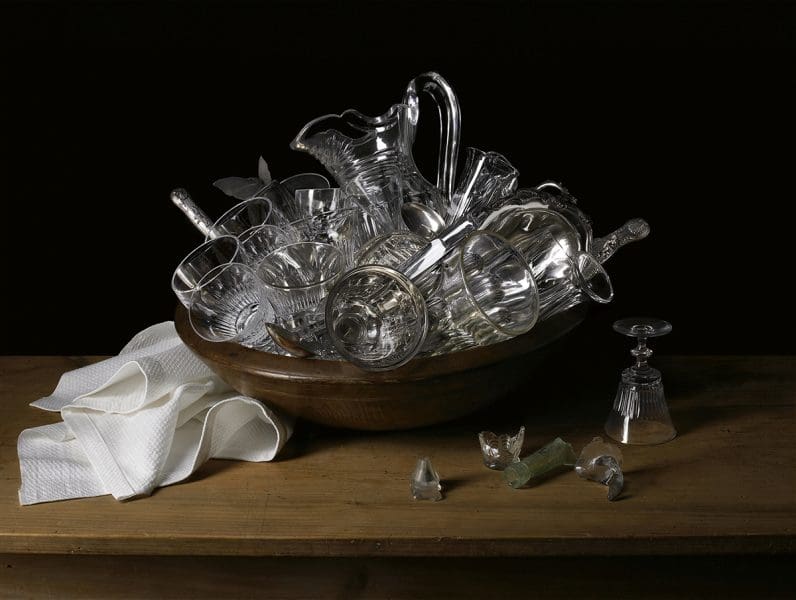
Robyn Stacey, Miss Eliza Wentworth’s glassware, 2008, from the series The great and the good, chromogenic print 120.0 x 160.2 cm. Monash Gallery of Art, City of Monash Collection, acquired with the funds raised by Friends of MGA Inc 2009. Courtesy of the artist, Darren Knight Gallery (Sydney) and Jan Manton Gallery (Brisbane)
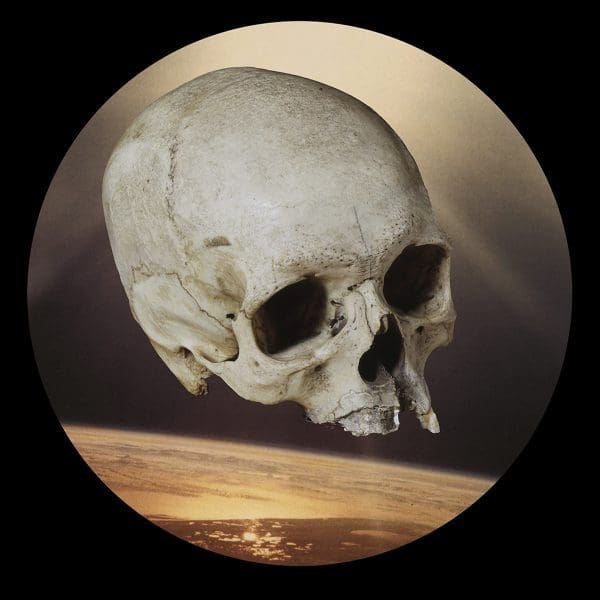
Robyn Stacey, Skull, 2005, from the series Supermodels, lenticular print 100 x 100 cm. Courtesy of the artist, Darren Knight Gallery (Sydney) and Jan Manton Gallery (Brisbane)

Robyn Stacey, Fontaine de Vaucluse, 2009, from the series Empire line, chromogenic print 120.0 x 169.5 cm. Courtesy of the artist, Darren Knight Gallery (Sydney) and Jan Manton Gallery (Brisbane)
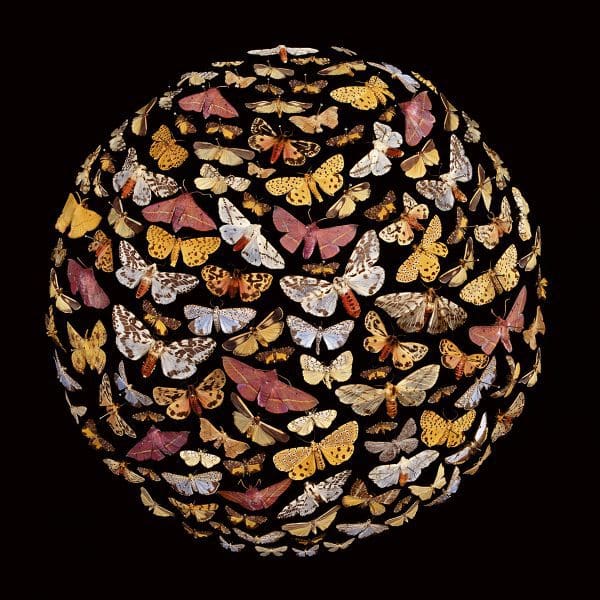
Robyn Stacey, Beau monde (pink), 2006, from the series Beau monde, chromogenic print 120 x 120 cm. Courtesy of the artist, Darren Knight Gallery (Sydney) and Jan Manton Gallery (Brisbane)

Olive Cotton, Tea cup ballet, 1935, gelatin silver print 37.2 x 30.0 cm. Monash Gallery of Art, City of Monash Collection
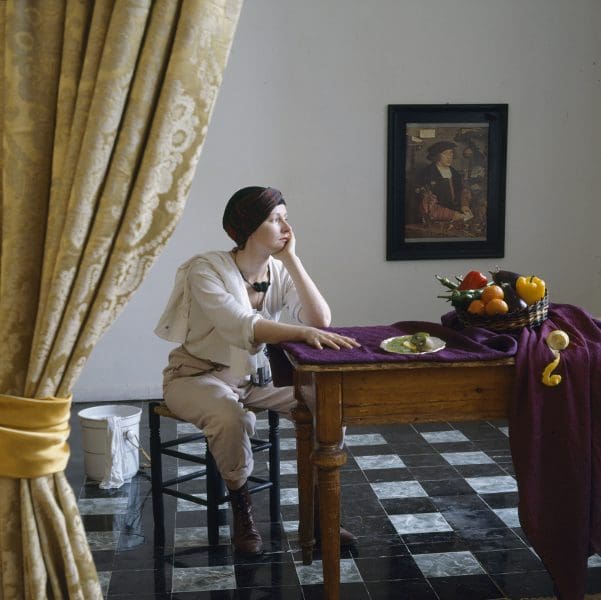
Anne Zahalka, The cleaner (Marianne Redpath/performance artist),1987, from the series Resemblance, silver dye bleach print 84.3 x 84.3 cm. Monash Gallery of Art, City of Monash Collection, courtesy of the artist
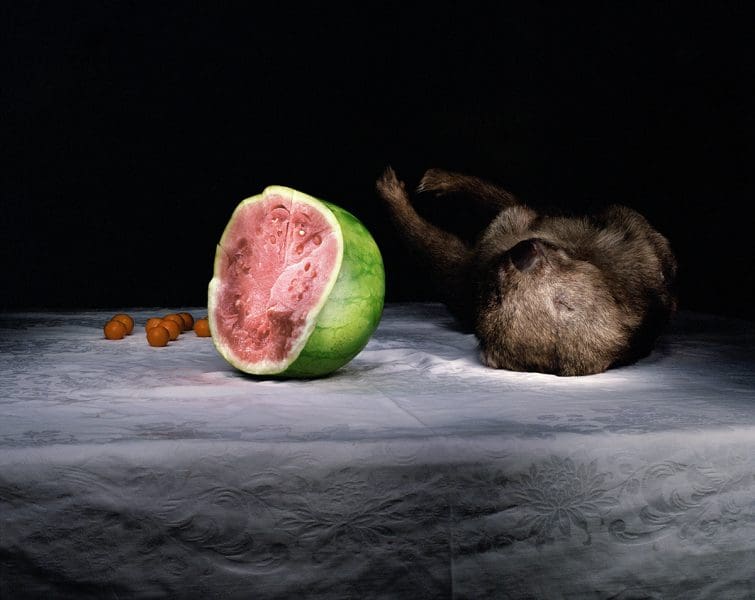
Marian Drew, Wombat and watermelon, 2005, from the series Still life / Australiana 2003–09, pigment ink-jet print 110.5 x 140.7 cm. Courtesy of This Is No Fantasy (Melbourne) and Robin Gibbs Gallery (Sydney)
Still life is a mature tradition, spanning continents and centuries. It reveals the everyday paraphernalia, studios and metaphysical philosophies of its makers, and is popularly enjoyed for its pleasurably encrypted messages and sumptuousness mimesis. How does a contemporary artist approach this hefty legacy?
As still as life celebrates the work of photographer Robyn Stacey, whose arrangements of museum holdings reconstitute the obsessions and occupations of historical collectors. In this group show, other works from the Monash Gallery of Art (MGA) and National Gallery of Victoria mark out the breadth of Australian still-life photography. Sheridan Coleman spoke to Robyn Stacey and MGA curator Anouska Phizacklea about the way that narratives can be summoned from even the dustiest, opaquest archives.
Sheridan Coleman: Robyn, you’ve spent a lot of time in prominent collections, selecting objects to include in your still-life photographs. What are you looking for as you navigate a collection?
Robyn Stacey: For me, still life is a vehicle to show the narratives that exist within the collections. I started at the National Herbarium of New South Wales and then I went to the National Herbarium of the Netherlands. In Sydney, I worked at the Macleay Museum, Elizabeth Bay House, Vaucluse House, Rouse Hill Farm and The Mint library. These collections contain millions of objects. Visitors generally see less than one per cent.
The Macleays, for instance, believed they could collect one of everything in the world. Of course they failed, but in entomology alone they have 10,000 type specimens (from which later specimens are named). Still life was a way to explore all these collections, to transcend their taxonomic categories and make other connections; to pair a giant amethyst with a gorilla skull.

SC: Historical still lifes often used a highly symbolic visual language…
RS: It requires the viewer to participate in understanding the composition. The genre developed because the Dutch became very wealthy very quickly, through the Dutch East India Company, while remaining very Protestant.
SC: How do you adapt the symbolism of still life to an Australian context?
Anouska Phizacklea: Robyn’s photographs reveal the colonial migrant experience in Australia. This is played off against the history of Australian still-life photography in the adjacent space [which shows works by other artists]. In untitled home, 2007, Katthy Cavaliere tells a story about homelessness and transience: bags and boxes represent home for some. Others simply use them to move house. In The cleaner, 1987, Anne Zahalka incorporated contemporary objects like kiwifruit and headphones into her re-staging of a Johannes Vermeer painting The artists embed their contemporary context onto the objects in their work.
RS: Still life is meant to be read. My photo Rouse and the Cumberland Plain, 2010, reads right to left, starting with pre-1810 native vegetation. By 1870, the plain had been felled twice. As you move across the composition, objects reference the orange orchards and water-conserving hillside terraces. There are terracotta tiles, once laid by convicts, and fern varieties made fashionable by Queen Victoria. Australian settlement coincides with the industrial revolution, so farming was mechanised from the beginning. There’s a jar of chemical compound used for insect spray and early copper sprinklers.
SC: How important was collecting to colonial Australians?
RS: Everybody collected. It’s difficult for people to understand, but at that point in time, people came here for the flora and fauna. To Northern Hemisphere eyes, Australia was like the moon. Saturday was collecting day in Sydney. Specimens were collected for science or sent to friends and family overseas. I became interested in the collectors themselves and the obsessive nature of collecting.
SC: Tell me about re-animating a collector’s biography using their collection.
AP: I love The First Cut, 2009. It’s a simple composition telling the story of a wealthy landowner who was fascinated by watermelons. He was a womaniser who married the daughter of a convict. They were shunned from polite society. Robyn represents this complex person and his family turmoil with just a piece of fruit.

RS: People come for the still life but quickly realise there’s something else in the objects: the traces of life and habitation. If you go to Elizabeth Bay House in Sydney today, it’s decorated in a genteel English style. Actually, it would have resembled a collection depot or science lab: specimens in jars, preserving trays, dead birds, traders arriving with sacks of wobbegongs or possums, smell and noise. Alexander Macleay’s family never entertained: all the money was spent on specimens from around the world.
SC: How has collecting changed since the heyday of the Macleays and Joseph Banks?
RS: Gentlemen back then had to have three things: a library, a garden and a collection. When Banks came to Botany Bay, he dried his specimens on unbound pages of Milton’s Paradise Lost: the guy was a showman. He thought any blockhead could tour Europe, so when Captain James Cook left to observe the transit of Venus, Banks tagged long. Everybody on HMS Endeavour had a book deal or a newspaper deal. They came to lead large lives. The world was enormous and everything was kind of knowable. Then the world shrunk. Today, you’re a specialist in just one tiny thing.
SC: How has working in museums influenced your appreciation for public collections?
AP: Collections define what we hold dear. Things enter museums, and later we come to understand them as culturally significant. Robyn brings this history to life, showing what these objects meant to their owners.
RS: They tell us who we are and where we came from. We haven’t always lived up to what has been bequeathed. A lot of collections are in disrepair or neglected. The Macleays embodied the Enlightenment in that they really believed in private benefaction for public good. That still happens today, but not enough. If more people were aware of what was in our Australian collections, we might value them more.
Robyn Stacey: as still as life features work by: Ann Balla, Del Kathryn Barton, Francis Busby, Nanette Carter, Jack Cato, Katthy Cavaliere, Olive Cotton, Sean Davey, Julie Davies and Alex Rizkalla, Marian Drew, Max Dupain, John Eaton, Susan Fereday, Joachim Froese, Viva Gibb, Christine Godden, Janina Green, Fiona Hall, Carol Jerrems, Ruth Maddison, Penelope Malone, David Moore, George J Morris, Jozef Stanislaw Ostoja-Kotkowski, Susan Purdy, Jacky Redgate, Jon Rhodes, Michael Riley, Matthew Sleeth, Robyn Stacey, Mark Strizic, Beverley Veasey, and Anne Zahalka.
Robyn Stacey: as still as life is a Monash Gallery of Art (MGA) travelling exhibition, first shown at Monash Gallery of Art. This article was first published in January 2019.
Robyn Stacey: as still as life
Flinders University Art Museum
12 October – 5 February 2021
Please note, Flinders University Art Museum is currently closed in line with COVID-19 restrictions. Please refer to the gallery website or social media for announcements regarding reopening.